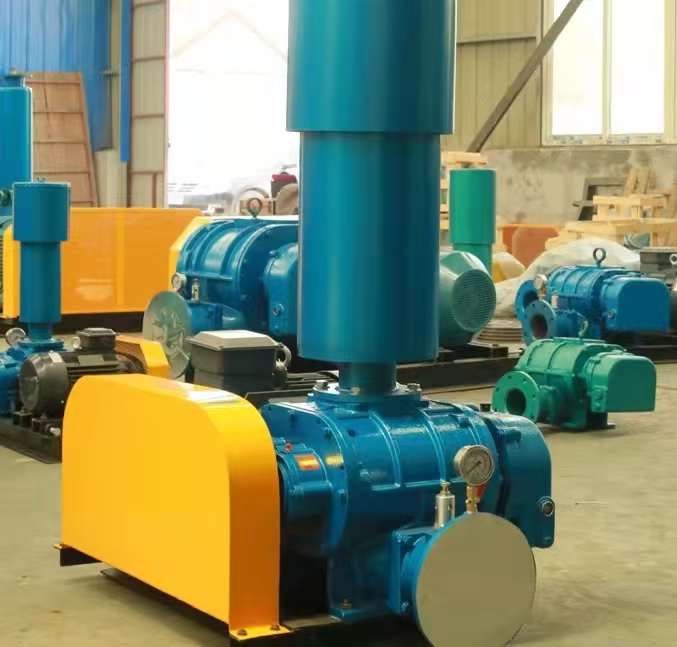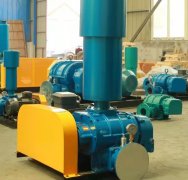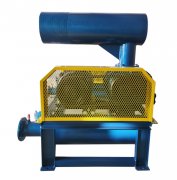Overloading of Roots blower may lead to a series of problems, including motor overload, equipment damage, etc. The following are common reasons for Roots blower overload and corresponding solutions:
Common reasons
1. Pipeline blockage: When the air outlet of the fan is not smooth and the gas cannot be discharged smoothly, it will cause the pressure to rise, thereby overloading the motor. For example, during the aeration process of sewage treatment, non-standard shutdown may cause water to be sucked back and block the aeration disc, and the current will increase sharply when restarted.
2. Poor lubrication: When the fan operates in a state of oil shortage, the bearings will dry out and the gears will wear out, which will increase the load on the motor and thus increase the current.
3. Misconduct: Some operational errors may also cause the fan to overload. For example, starting the fan before the one-way valve is installed in reverse or the gate valve is not fully opened may instantly burn out the motor.
4. Fan quality issues: If the Roots blower has quality problems at the factory, such as poor clearance and coordination of components, poor impeller balance, etc., it will cause additional friction or damage, thereby increasing the motor load.
5. Design or installation issues: The fan design is unreasonable or there are problems during installation, such as the fan being in a closed and small space where it cannot dissipate heat, which may also cause motor overload.
6. Overloading of the motor: The motor load of the Roots blower exceeds the design load range, which can cause the motor to overload.
7. Heat sink issue: If the motor heat sink is contaminated or blocked, it can cause the motor temperature to be too high, leading to overload.
8. Winding or bearing damage: Motor winding or bearing damage can cause excessive internal current or unstable rotation of the motor, resulting in an increase in load and causing overload.
9. System pressure changes: When the inlet filter is clogged or other reasons cause an increase in pressure, negative pressure is formed (when the outlet pressure remains constant, the pressure increases), and the outlet system pressure increases, which may also lead to motor overload.
solution
1. Regular inspection and maintenance: Regularly check whether the pipeline is blocked to ensure that the fan outlet is smooth; Regularly inspect and maintain the fan lubrication system to ensure that the bearings and gears are well lubricated.
2. Correct operation: Strictly follow the operating procedures of the fan to avoid overloading caused by misoperation.
3. Choose fans with reliable quality: When purchasing Roots blowers, choose products with reliable quality and stable performance to avoid purchasing fans with quality issues.
4. Reasonable design and installation: When designing and installing Roots blowers, fully consider the heat dissipation of the blower to ensure that it is in a good working environment.
5. Control motor load: Ensure that the load of the Roots blower is within its rated load range to avoid motor overload operation.
6. Regularly clean the radiator: Regularly clean the motor radiator to ensure that it is unobstructed and avoid excessive motor temperature.
7. Timely replacement of damaged components: Once motor windings or bearings are found to be damaged or other component failures, they should be replaced in a timely manner to avoid the expansion of the fault and causing the fan to overload.



